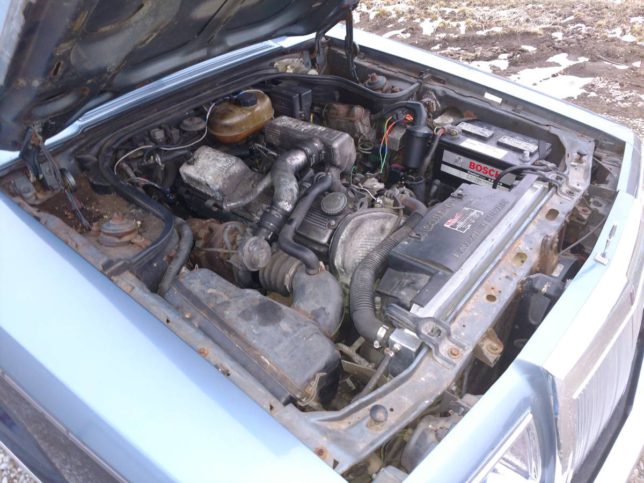
- by
- Automotive
How To Safely Degrease Your Engine in Australia
After engine repairs or an engine replacement, you might realise your engine is covered in grime. This grime may include gasoline, engine oil, dirt and brake dust among other things. Getting these components off of your engine can be tough to do with regular car soap and water because the engine degreaser helps break up stuck-on dirt by removing the contaminants so it can easily be washed away. So, let’s talk about How To Safely Degrease Your Engine in Australia.
What Are Engine Degreasers?
Engine degreasers are different from engine soaps as they’re not designed to leave behind a nice clean feeling like their name suggests.
Instead, engine degreasers are formulated to help cut through tough grease and carbon deposits that accumulate over time during normal driving conditions. Engine degreasers also contain solvents that break down stubborn oily residues found on engines to help clean engine parts.
Where do Engine Degreaser Work Well On
Engine degreasers work well on engine components like engine blocks, engine heads, engine accessories and engine valve covers among many other components that might need cleaning after an engine replacement or engine repair. They’re even good at removing old paint from bolts, studs and screws that you don’t want to be painted over again.
Some brands of degreasers available today can be used as a regular car soap alternative meaning they’ll still leave behind a squeaky clean feeling but won’t remove all the dirt around bolt holes or hard-to-reach engine compartment areas.
If you plan on using an engine degreaser instead of engine soap, make sure you start with rugged engine components like the engine block or engine heads first because some engine degreasers can eat through painted surfaces if left there for too long.
When cleaning engine valve covers, make sure to remove all of the old gasket material before spraying down any engine degreaser.
- After applying an engine degreaser to one part of your car engine, let it dwell on that area for about five minutes so it has time to loosen up dirt and grime before power washing away the mess.
- If you’re adding this step between two different parts of your engine, be careful not to get the two dirty areas mixed up after power washing.
- If you’re not sure if engine degreaser will work for your engine bay, check with your car’s manufacturer to see what chemicals they recommend using on engine components for replacement or engine repairs.
For the best results possible when using an engine degreaser on your engine’s components, use it in conjunction with a power washer to reach the areas regular car soap can’t reach.
You can also ask an auto parts store technician which engine degreasers they suggest and recommend as engines vary depending on the engine model and brand of car you drive.
Engine Degreasers’ Usage at A Car Wash
How engine degreasers are used at car washes depends on either the brand of engine degreaser or how it is labelled.
There are engine degreaser products available for use by professional detailers, and there are engine degreaser products available for consumers to do their own vehicle maintenance at home.
When using engine degreasers in a professional capacity, it is important that the product be “engineered” for such use so as not to compromise any engine seals and ensure the safe operation of the engine and drive train component parts. How engine degreasers should be applied under these circumstances will vary depending on the manufacturer’s recommendation and instructions provided with the purchase of each individual engine degreaser system.
When applying an engine degreaser at home, the engine degreaser should only be applied if it is labelled for use on an engine. Engine degreasers are typically made of very caustic cleaning agents that can etch engine components or coat engine parts with a film if not used properly. Most engine degreasers will also come with specific instructions to follow in order to avoid causing damage to engine components.
Some engine degreasers do not contain enough active ingredients to effectively remove heavy grease build-up from engine components, but this is rare since most engine degreaser systems usually come with a degreasing agent included.
If engine degreasers are not used according to the manufacturer’s instructions for engine use, engine degreasers can potentially harm engine components if left on too long without being rinsed off.
Also, engine degreasers should never be allowed to dry or they may form a sticky or slimy residue that will attract dirt and dust making the engine appear dirty after cleaning is done.
- It is important to know how engine degreasers should be stored and how much engine degreaser is applied depending on the purpose of the engine cleaner and how it should be labelled before purchasing any brand or type of product for use as an engine cleaner.
- Engine degreaser systems range from costly professional products available only at car wash facilities or auto detailers to do-it-yourself engine degreaser systems available for purchase at automotive parts stores.
- Engine degreasers that have been made for home or garage use should only be applied if it is labelled as engine degreaser, but engine degreasers designed for professional use will advise whether they should be diluted with water before being put into engines.<be
Some engine degreasers come with specific instructions to follow in order to avoid causing damage to engine components if engine cleaners are applied according to the label instructions provided with each engine cleaner.
Most engine degreasers will also come with specific instructions about when engine cleaner should or shouldn’t be applied because different engine degreaser systems were designed for professional use or home use. Some engine degreaser systems will advise whether they can be diluted with water before being put into engines while others only are rinsed off after engine cleaner has been applied.
Conclusion
If engine degreasers are used according to label instructions provided with engine cleaners, engine degreasers are safe for use at car washes even though they are caustic in nature. They pose no threat of harming the environment or compromising the safety of equipment because engine degreasers will have been thoroughly diluted and rinsed off according to the manufacturer’s instructions on how engine degreasers should be labelled.

